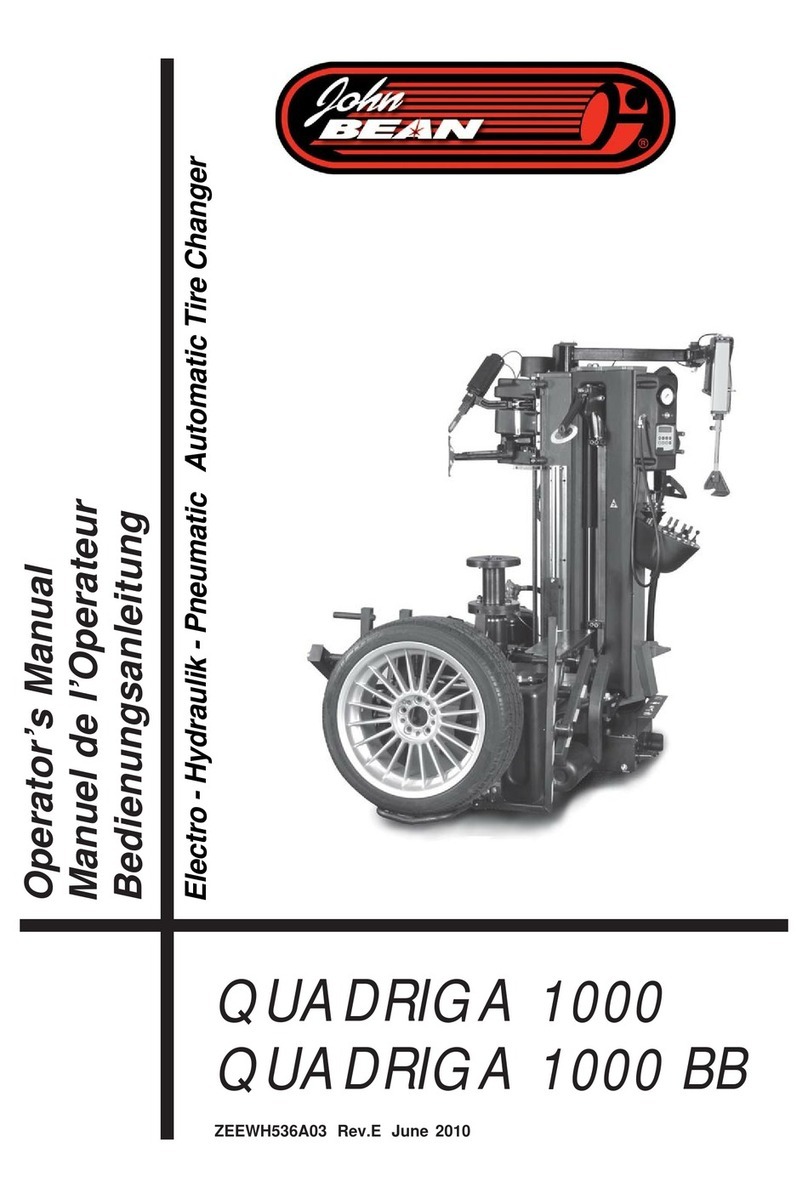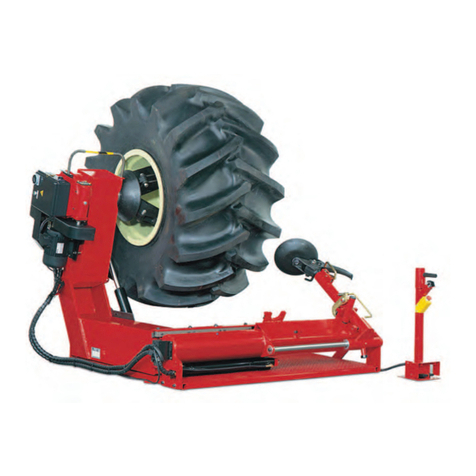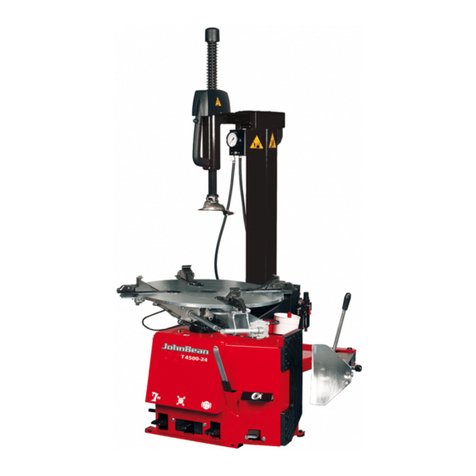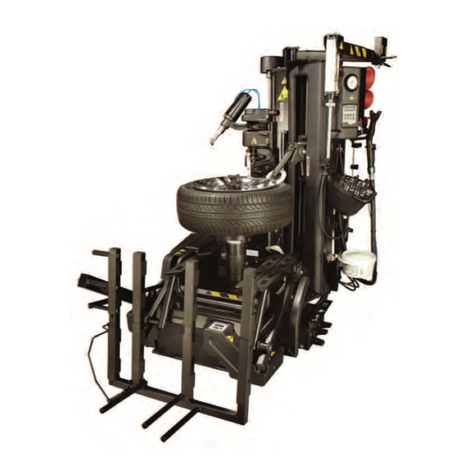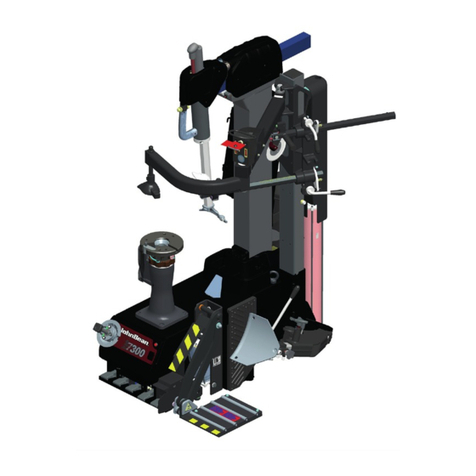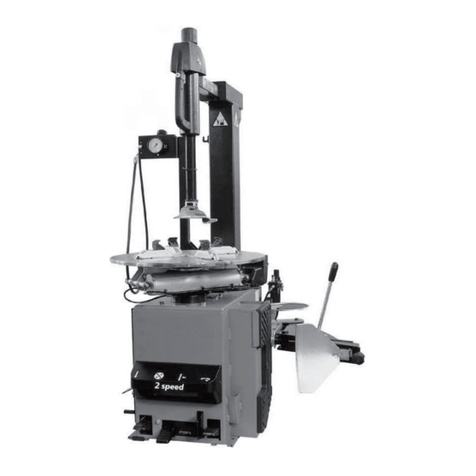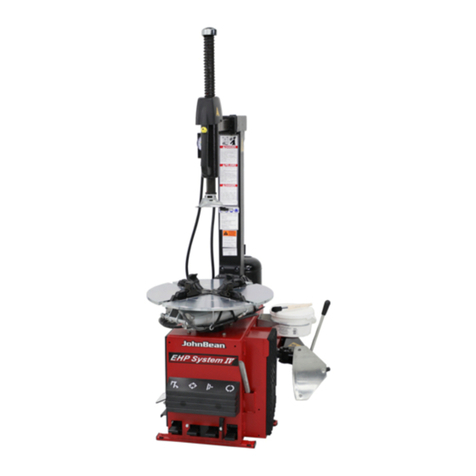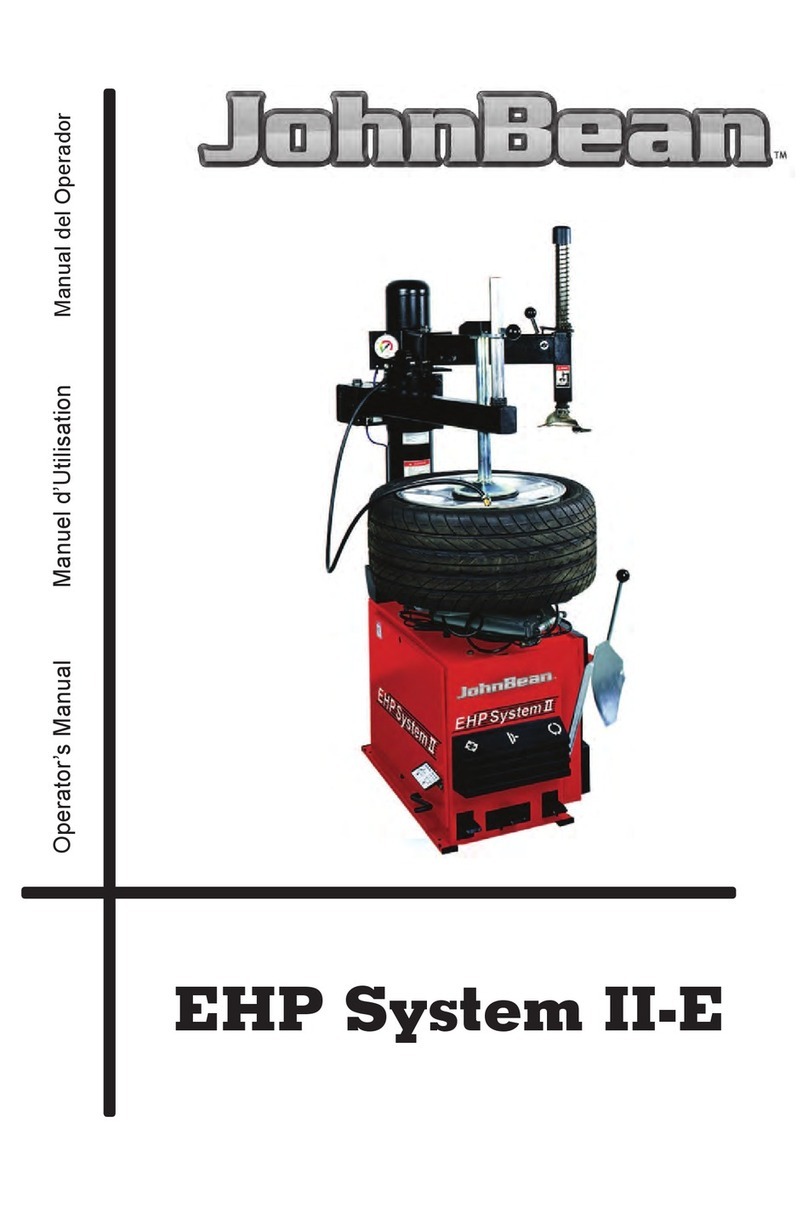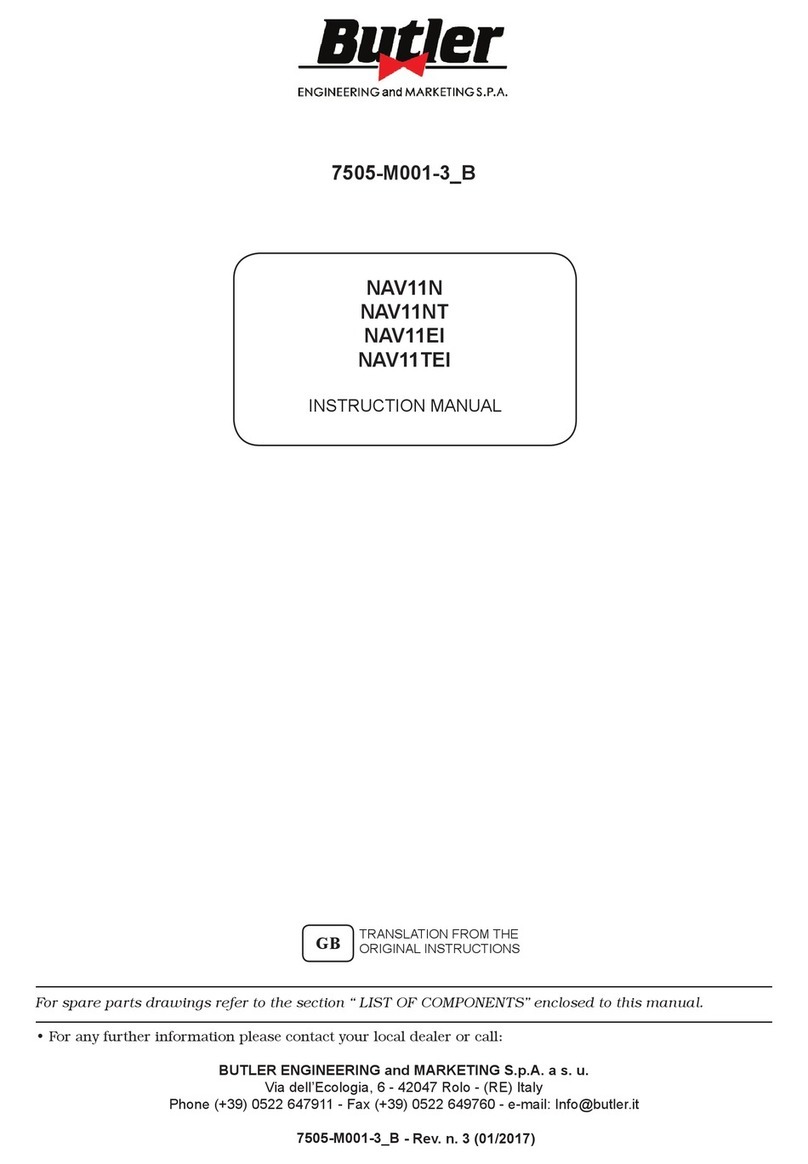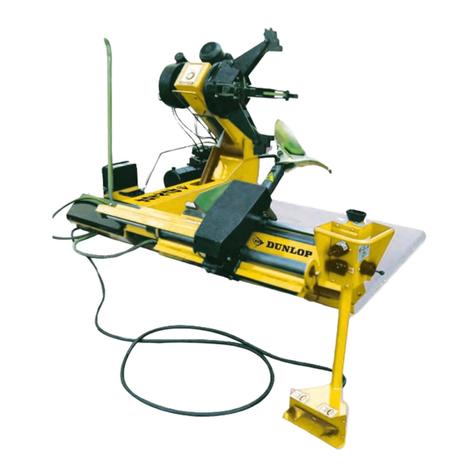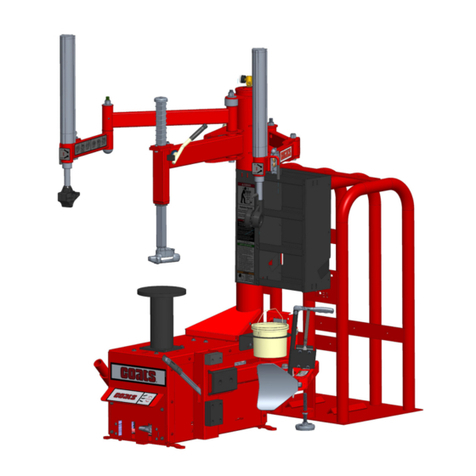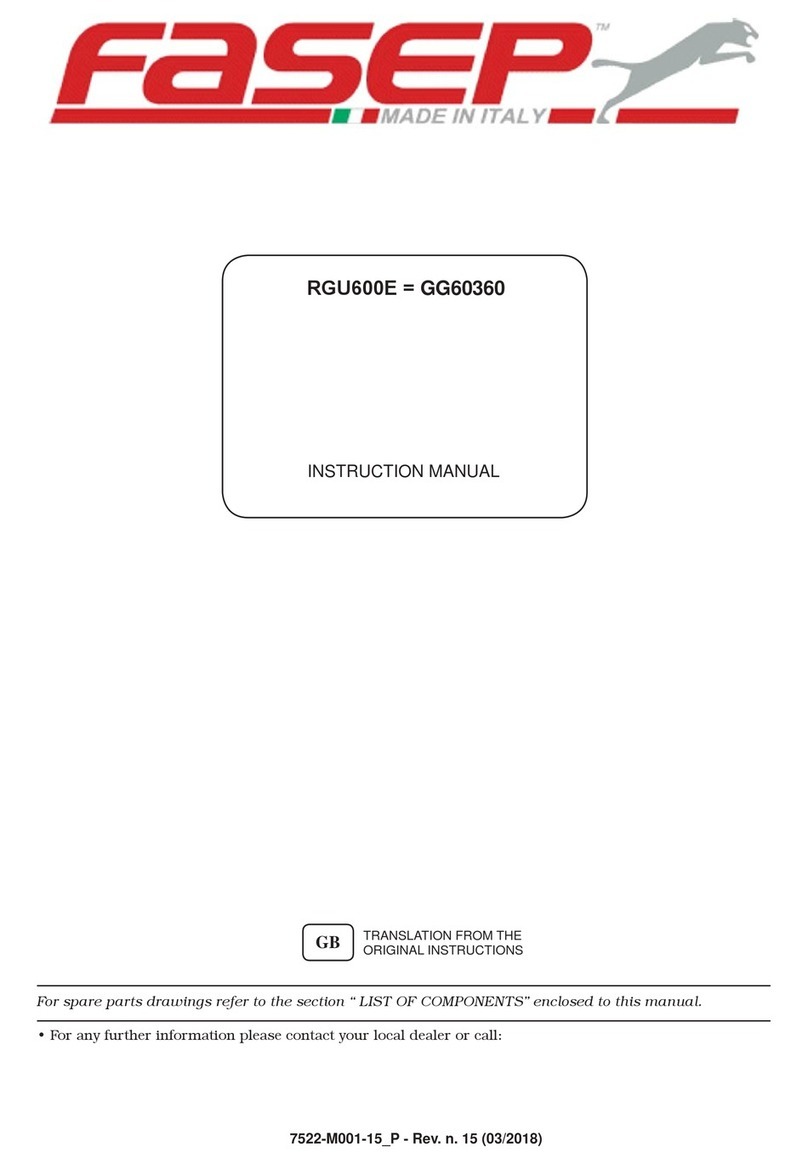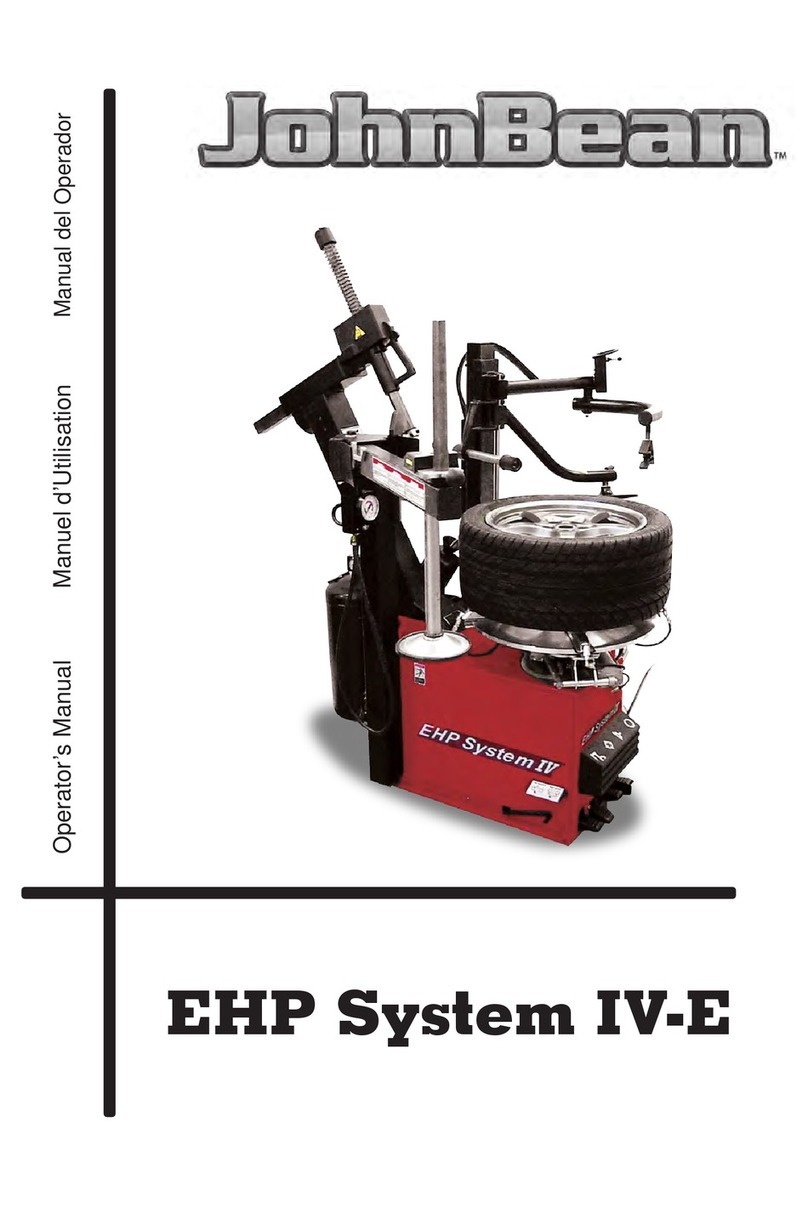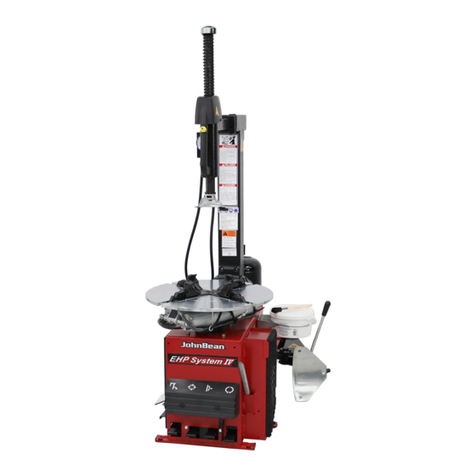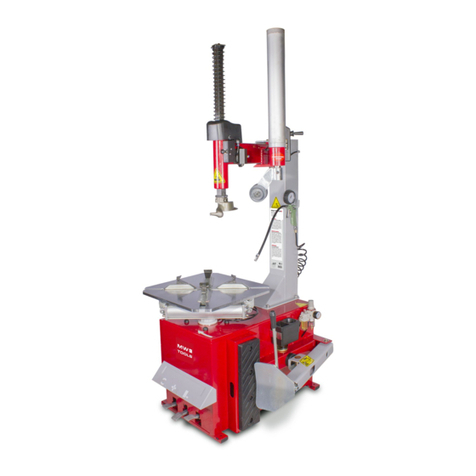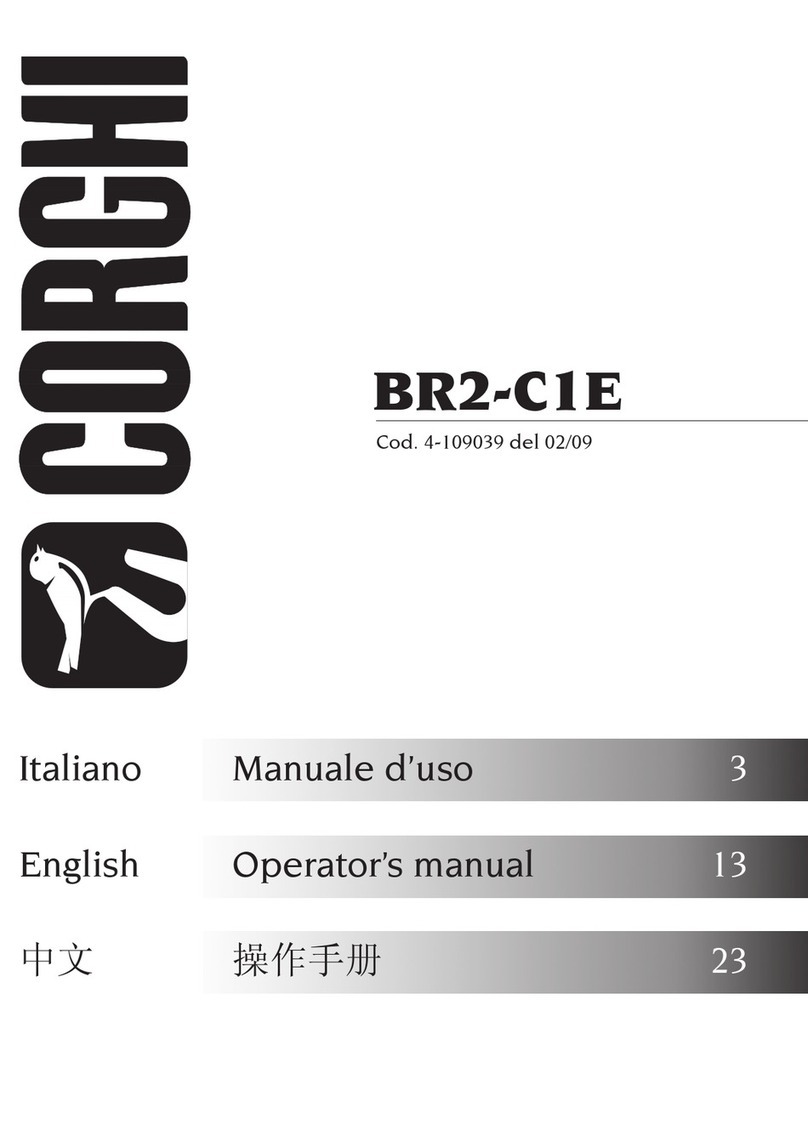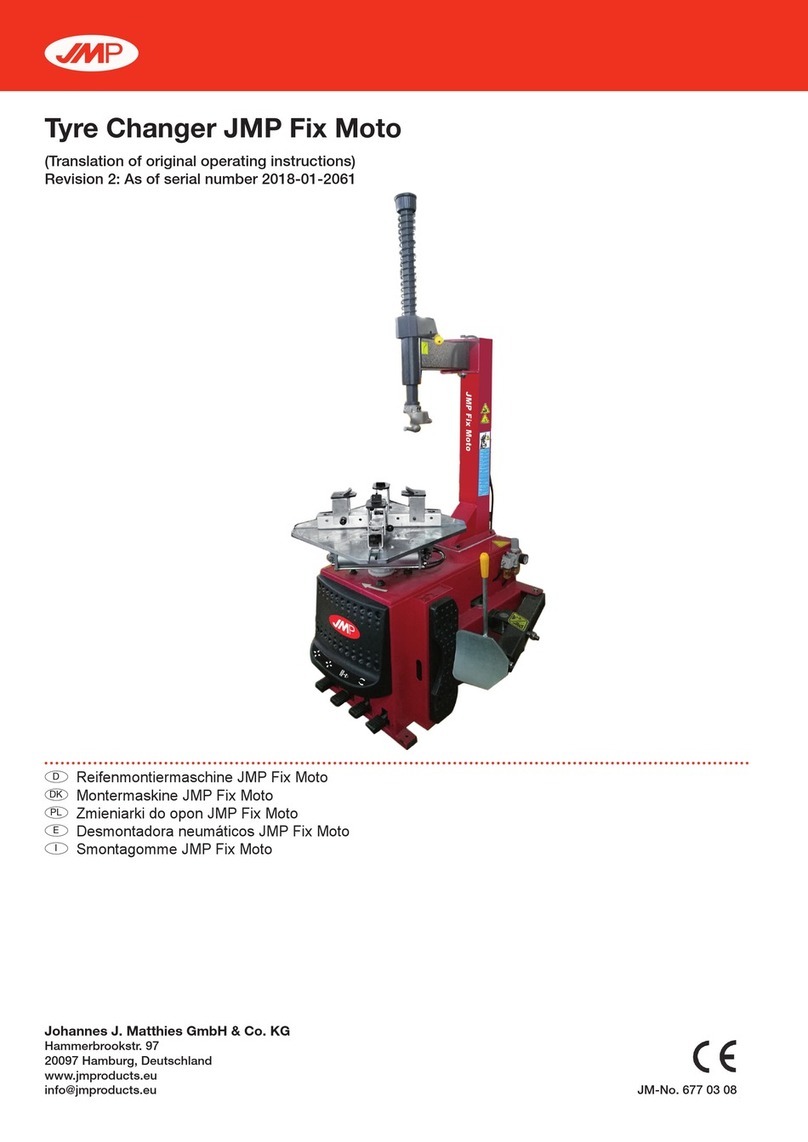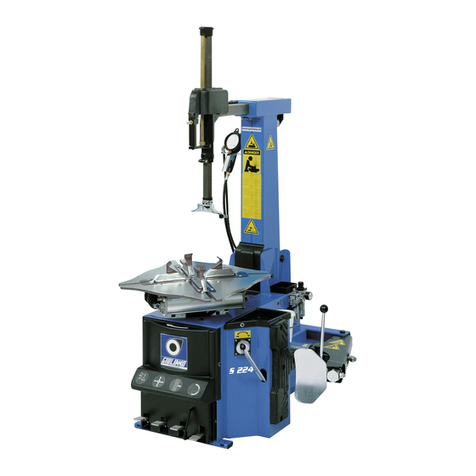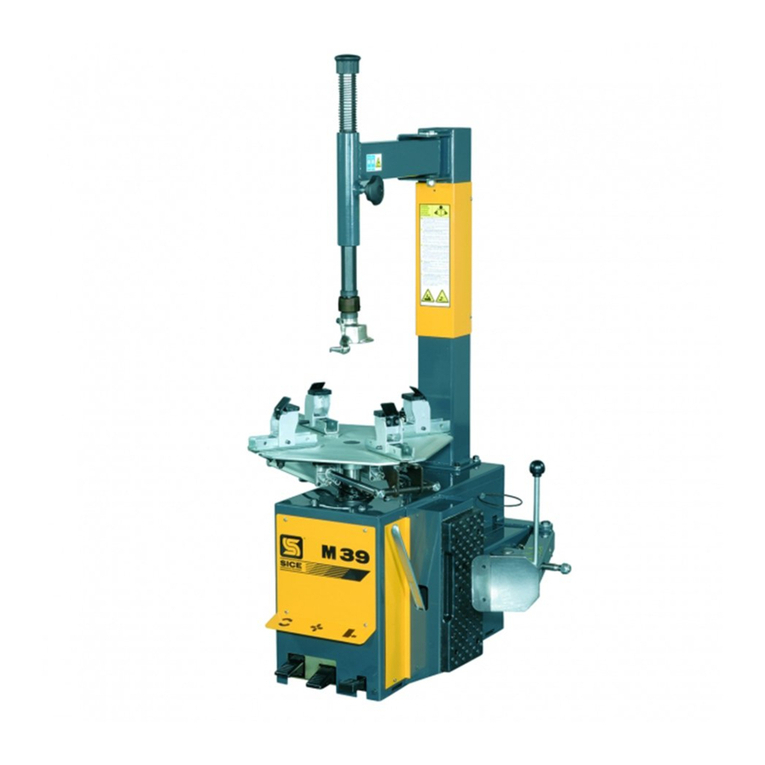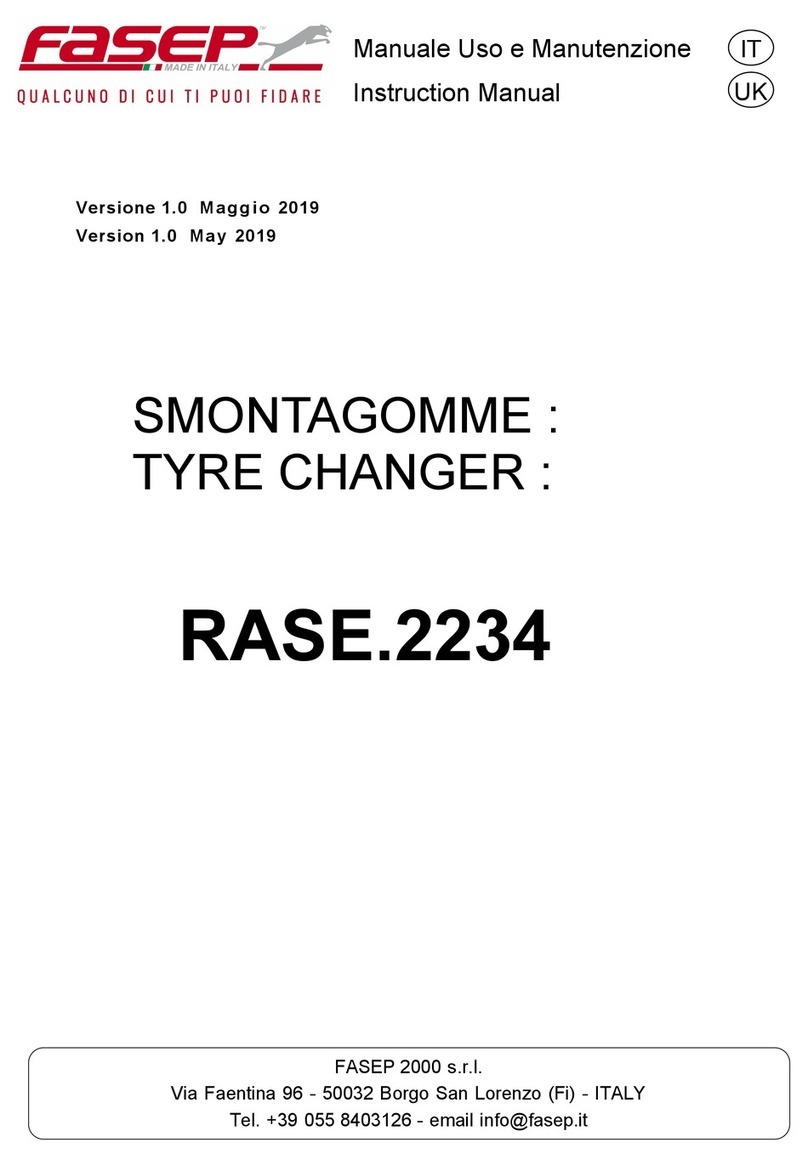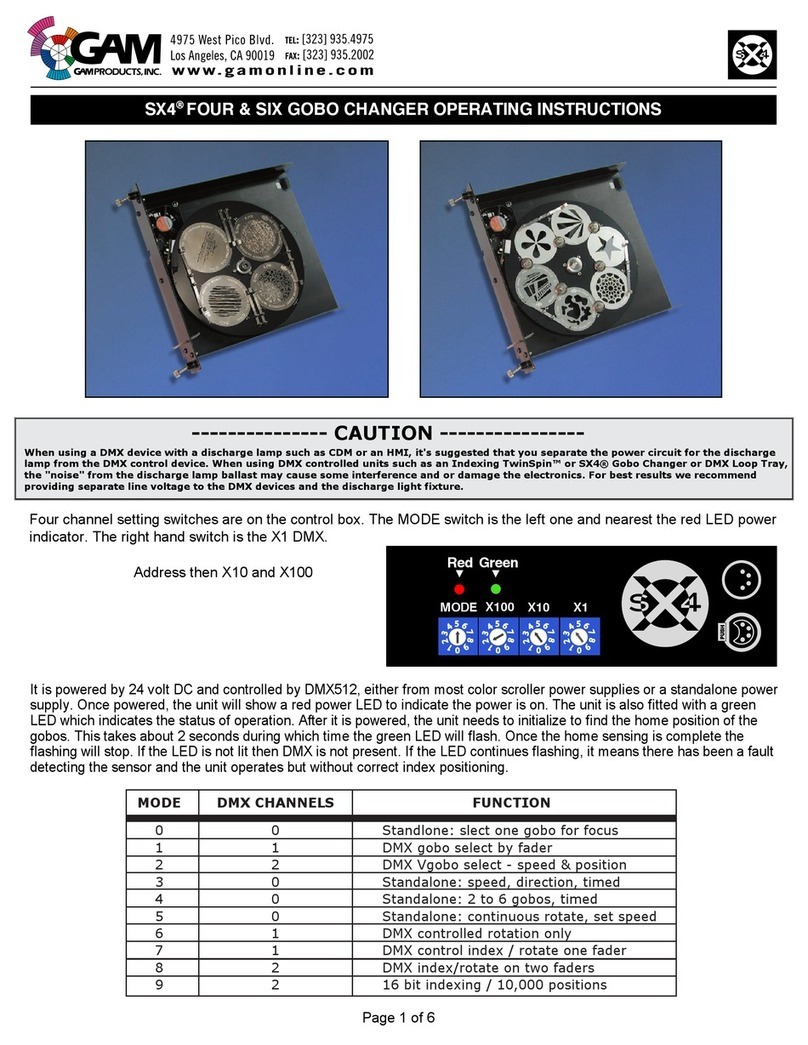6
INFORMATIONS DE SÉCURITÉ
Pour votre sécurité, avant d’actionner le démonte-
pneu EHP System V lire complètement le
présent manuel.
Le démonte-pneu électro-pneumatique
EHP System est destinée à des
techniciens spécialisés en appareils
d’entretien automobile et formé de façon
appropriée. Les consignes de sécurité
présentes dans cette section et dans tout
le manuel sont un aide-mémoire pour
l’opérateur, pour qu’il fasse très attention
lors des opérations des changeants du
pneu avec ces produits.
Il existe d’innombrables procédures,
techniques, outils, et parties pour
changeants du pneu, tout comme le
savoir-faire de chacun dans son travail.
À cause des innombrables interventions
possibles sur les roues, les jantes et des
différentes utilisations potentielles du
produit, le fabricant n’est pas en mesure
d’anticiper, de suggérer ou de mettre
des Messages de Sécurité pour toutes
les conditions. Il incombe au technicien
de l’appareil d’être bien informé des
caractéristiques de la roue et la jante
qui doit être remplacé. Il est essentiel
d’utiliser des procédures correctes et
d’exécuter les changeants des pneus
de façon appropriée et acceptable, ne
mettant pas en danger la sécurité de
l’opérateur et celle d’autres dans la zone
de travail ou l’appareil et le véhicule
utilisés pour la réparation.
On présume qu’avant l’utilisation du
démonte-pneu EHP System, l’opérateur
a une connaissance complète des
méthodes à adopter pour changeants
des roues et des pneus. En outre, il est
sous-entendu qu’il a une connaissance
complète des caractéristiques de
fonctionnement et de sécurité concernant
le pont ou l’élévateur utilisé ou élévateur
au sol soit utilisé, et qu’il dispose des
outils manuels ou électriques nécessaires
à l’exécution du service au véhicule, en
condition de sécurité.
Avant d’utiliser le démonte-pneu EHP
System, se reporter toujours aux
messages de sécurité et aux procédures
de service fournis par les fabricants de
l’équipement utilisé et du véhicule en
réparation.
IMPORTANT!! CONSERVER CES
INSTRUCTIONS - NE PAS LES SUPPRIMER!!
SAFETY INFORMATION
For your safety, read this manual
thoroughly before operating the
EHP System V Tire Changer
The EHP System Tire Changers are
intended for use by properly trained
automotive technicians. The safety
messages presented in this section
and throughout the manual are re-
minders to the operator to exercise
extreme care when changing tires with
these products.
There are many variations in proce-
dures, techniques, tools, and parts for
changing tires, as well as the skill of
the individual doing the work. Because
of the vast number of wheel and tire
applications and potential uses of the
product, the manufacturer cannot pos-
sibly anticipate or provide advice or
safety messages to cover every situ-
ation. It is the automotive technician’s
responsibility to be knowledgeable of
the wheels and tires being changed.
It is essential to use proper service
methods and change tires in an ap-
propriate and acceptable manner that
does not endanger your safety, the
safety of others in the work area or the
equipment or vehicle being serviced.
It is assumed that, prior to using the
EHP System Tire Changers, the oper-
ator has a thorough understanding of
the wheels and tires being changed. In
addition, it is assumed he has a thor-
ough knowledge of the operation and
safety features of the rack, lift, or !oor
jack being utilized, and has the proper
hand and power tools necessary to
service the vehicle in a safe manner.
Before using the EHP System Se-
ries Tire Changers, always refer to
and follow the safety messages and
service procedures provided by the
manufacturers of the equipment being
used and the vehicle being serviced.
IMPORTANT !! SAVE THESE
INSTRUCTIONS — DO NOT
DISCARD !!

